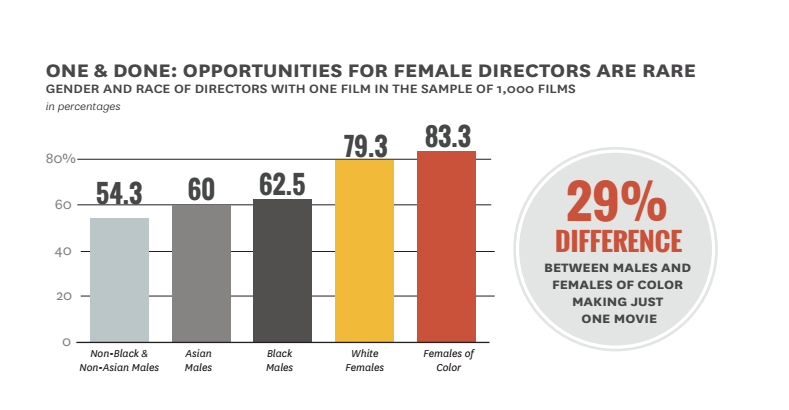Women and people of color were starkly underrepresented among directors of the past decade’s biggest films, a new report from University of Southern California Annenberg’s Media, Diversity, and Social Change Initiative has revealed. According to the study, of the 1,000 highest-grossing movies between 2007 and 2016, 4 percent of directors were women, 5 percent were black, and 3 percent were Asian. Further, while the women helming feature films tend to be in a relatively narrow age bracket, “the span of … males’ [careers] appears to be limitless.”
Explorations of behind-the-scenes representation in Hollywood continue to paint a bleak picture. Even as awareness increases and attitudes ostensibly shift, massive gulfs in opportunity remain. To quote one of the study’s bleak conclusions, “[T]here has been no meaningful change in the prevalence of female directors across the top films from 2007 to 2016.”
In that regard, this study best serves as confirmation of what other reports have previously documented, with its relatively large sample size only amplifying their significance and reliability. Perhaps more notable is MDSCI’s testing of the “one and done” theory, which relates to directors struggling to continue making films beyond their breakout. According to the report, 83 percent of women of color and 79 percent of all women represented in the Top 1,000 had directed only one movie; conversely, of nonblack and non-Asian men behind the listed films, nearly half went on to direct additional movies. It’s difficult enough for women and people of color to get their foot in the door at all. These detailed statistics make clear that the barriers to continued success are no less challenging to overcome.

Dr. Stacy L. Smith/Graphics by Patricia LaPadula
In the 2015 documentary Celluloid Ceilings, Twilight director Catherine Hardwicke spoke on this phenomenon in reference to the boom of young-adult franchises in Hollywood. “After Twilight, people were excited about Divergent, people were excited about The Hunger Games—in fact, people were even inspired to write those books, probably, with the success of Twilight,” she explained. “It’s shown that there’s a desire, there’s an audience … It’s disappointing that even though a female director directed the first Twilight—did the whole cast, set the whole look—that none of the other Twilights or The Hunger Games or Divergent … all books written by a woman and starring a woman … not one of them has been directed by a woman.”
You can access the full MDSCI report here.
